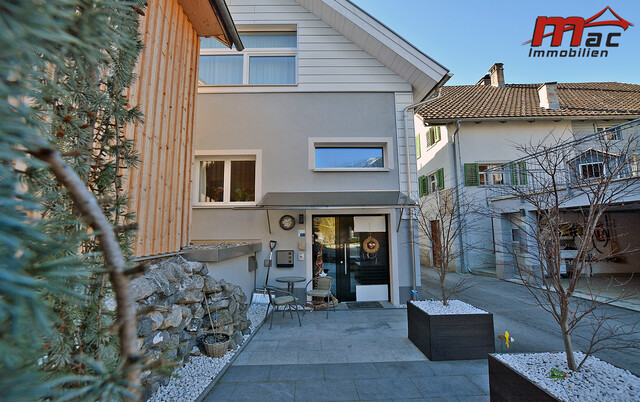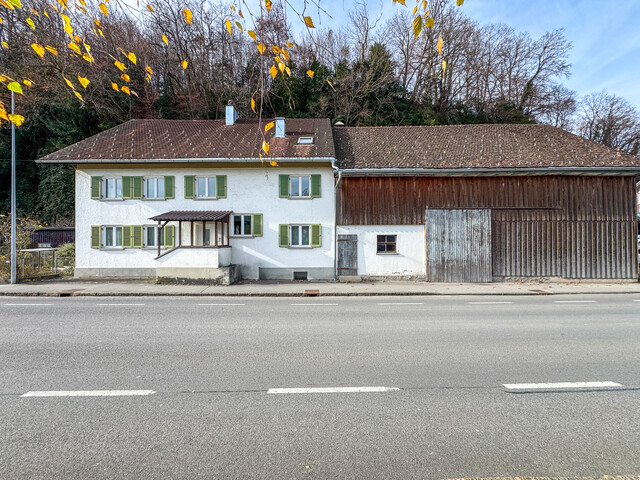New Savings Package: An Overview of All Measures
In the coming years, a huge effort will be required from the federal government and the entire country to rehabilitate the dilapidated state budget. After the consolidation measures planned for this year amounting to 6.4 billion euros, even larger sums have been planned for the coming years. In total, by 2029, 54 billion euros are to be found, either saved on expenditures or generated through additional revenues.
Next year, the government aims for a rehabilitation amount of 8.7 billion euros as announced, in 2027 it will be significantly more with 11.2 billion, 13.1 billion in 2028, and a full 14.6 billion euros in 2029. To have money available for offensive measures, the actual savings volume is even higher, amounting to about 7 billion this year, 10.3 billion euros in 2026, and according to the budget plan, 16.5 billion euros in 2029.
One third from revenue, two thirds from expenditure
About one third will be rehabilitated through the revenue side, two thirds through expenditure-side savings. Specifically, the largely already decided tax measures amount to 1 billion euros this year, and 2.2 billion euros next year. 550 million will come annually from increased contributions for banks and energy suppliers. 440 million will be generated from next year by the partial suspension of the abolition of cold progression. 270 million is expected from yet to be defined measures to combat tax fraud.
The subsequent valorization of federal fees, which will increase the costs for passports and the like by around 40 percent from July 1, will account for 65 million euros this year and 150 million on the revenue side in the budget next year. The extension of the tobacco tax to alternative nicotine products is expected to bring in 85 million next year.
On the side of saved expenditures, the cancellation of the climate bonus is recorded, even though this measure was introduced as compensation for the CO2 tax. It brings in around 2 billion euros annually. The second largest chunk is expected from cuts in subsidies: 1.3 billion euros this year, rising to 2.1 billion by 2029. Affected are mainly environmental subsidies, but also the investment premium and subsidies for the climate ticket, which is expected to become about 200 euros more expensive from next year.
7.7 billion savings in administration by 2029
Savings in administration are expected to bring 1.1 billion euros this year as announced, next year the departments must cut 1.3 billion, and in the following years, the contributions will continue to rise to 2 billion in 2029. In total, it amounts to 7.7 billion over five years. The labor market and pension measures decided are to take effect from next year. In 2026, 1.4 billion is calculated, rising to 2.7 billion by 2029.
Further savings include the non-valorization of all income-independent social and family benefits for 2025 and 2026, such as family allowance, childcare allowance, various tax credits, as well as rehabilitation, sickness, reintegration, and retraining benefits. This is expected to bring around 200 million to the budget next year and 362 million by 2029.
State-affiliated companies like ÖBB and Asfinag must also contribute to budget consolidation. 600 million are budgeted this year, 700 million next year. The majority of this comes from increased dividend payments, but also adjustments in the ÖBB investment plans. These are expected to bring 154 million this year and 415 million next year.
The goal is to be able to exit the deficit procedure, which the EU Commission will soon open, by 2028 through the consolidation package, as the budget deficit will be pushed back below the allowed 3 percent threshold by then. However, the budgetary austerity is not yet over, as the decision was made for a seven-year path of budget consolidation instead of saving even more within four years.
Subsidies Are Being Heavily Cut
The subsidy country Austria will be scaled back with the double budget 2025/2026. The aim is to reduce spending in this area by 1.3 million each. The environmental sector is particularly affected, but development cooperation, culture, and sports also have to make sacrifices. Broadband subsidies and investment premiums are among the other budget "victims."
Of course, the reduction of subsidies with the double budget is not the end. On the contrary, the savings volume in 2029, the last year of the new financial framework, is expected to amount to 2.1 billion.
The Ministry of Finance explains the savings in subsidies with a strong increase in recent years. In 2019, the federal government's disbursements for subsidies amounted to 6.4 billion. This figure has roughly doubled by the previous year.
As much as 557 million in savings are already planned for environmental subsidies this year. Alone, 328.5 million will be withdrawn from the Climate Fund, which corresponds to a subsidy reduction by half. There will be 177 million less for the transformation of industry and energy efficiency. In addition to environmental subsidies as a separate item, measures for the climate ticket (abolition of the free ticket for 18-year-olds and price increase) are expected to bring 120 million this year and 150 million from next year.
Decline in Broadband Subsidies and Investment Premiums
The subsidization of broadband funding is being significantly reduced. This year, 150 million will be cut. Close behind is the investment premium, with savings of 130 million. Originally, 383 million were budgeted for it. From 2026, the instrument will no longer exist. There will be 110 million less for agriculture, forestry, and water management. For example, subsidies for comprehensive crop insurance will be reduced. Additionally, 20 million will be withheld from the Forest Fund, with half being recorded not as subsidies but as departmental savings.
After sports were recently treated well budget-wise, subsidies are now being reduced by 15 million. Ten million of the savings come from special sports funding and five million from general sports funding.
The situation is not much better for art and culture. Every year, five million in subsidies will be cut. This area also recently saw a massive increase in funds.
Furthermore, the Federal Chancellery lists "budgetary adjustments" in subsidies for the protection of religious minorities. Other ministries, such as the social and interior departments, generally promise a resizing of subsidies.
The consolidation hits development cooperation and the foreign disaster fund very hard. Ten million this year and 40 million next year will be cut.
From next year, it is hoped that subsidy amounts will be significantly reduced again, namely through savings ideas from the established subsidy task force. For 2026, 150 million are already budgeted under this title. By 2029, they aim to generate 800 million by foregoing unnecessary subsidies.
Budget: Tax Revenues Flow Less, Tax Rate Rises
In light of the bleak economic situation, tax revenues are flowing less than expected. For gross taxes, an increase of 3.1 billion euros to 116 billion is expected in 2025 compared to the previous year. This is 2 billion less than estimated in the financial framework created in 2023. In the coming years, tax revenues are also likely to be lower than expected despite tax increases due to the weak economy. Nevertheless, the tax rate will rise to around 45.5 percent of GDP in 2026.
Due to the weak economy, corporate and income taxes will decrease by about 0.1 percentage points of GDP each in 2025. The tax-free employee bonus also has a dampening effect from the finance minister's perspective. Nevertheless, revenues from wage tax are increasing more than expected due to wage increases. In 2025, 1.1 billion more in wage taxes will flow into the state budget than in the previous year, and thus 500 million euros more than according to tax estimates in the financial framework 2024-2027. However, revenues from value-added tax, capital gains tax, corporate tax, and mineral oil tax are flowing less than assumed.
Thanks to the tax measures already decided by the tripartite coalition, additional revenues are coming from the bank levy, energy crisis contribution, and energy levy. The comparatively low asset-effective taxes are increasing due to the intensified taxation of foundations from 30 to more than 60 million euros in 2026.
The overall tax and levy rate is growing this year from 44.5 to 45.3 percent of GDP and next year to 45.5 percent. By 2029, the tax rate is expected to slightly decrease to 45.4 percent according to the financial framework. The goal set by ÖVP and NEOS of a tax rate towards 40 percent remains far off for the time being.
The targeted reduction in non-wage labor costs from 2027 is currently not financially feasible according to Finance Minister Markus Marterbauer (SPÖ), unless counter-financing is found through further measures.
Major Cost Drivers are Pensions and Interest
State expenditures have massively spiraled out of control in the past year, as shown by the enormous expected budget deficit of 4.5 percent of GDP this year. The biggest cost driver is pensions, which account for more than a quarter of the total federal budget expenditures. Noticeable are also the rising interest expenses due to high national debt, which increasingly burden the budget.
The largest item in budget disbursements by far is pensions. 32.9 billion euros are budgeted for this in 2025, which is 2.8 billion more than the previous year. Next year, the federal subsidy for pensions will rise to 34.2 billion. The reason for the increase this year, in addition to demographic development, is that the adjustment factor of 4.6 percent, which compensates for the previous year's inflation, is significantly above the nominal growth of 2.2 percent.
Even next year, pensions will remain by far the biggest cost driver due to demographic development. The government's measures change little in this regard. With the introduction of partial pensions, the employment package for older workers, and a more difficult access to corridor pensions, 633 million euros are expected to be saved next year, with slightly more savings in the following years: By 2029, the amount will rise to at least 1.9 billion euros.
Increasing financing costs are also a growing burden on the budget. Due to high national debt, 8.4 billion euros must be paid this year alone for interest and other financial expenses. This is 1 billion more than the previous year and corresponds to 1.5 percent of the gross domestic product (GDP). Next year, financing costs will rise to 8.9 billion or 1.7 percent of GDP. The increase continues and reaches 9.9 billion euros or 2.4 percent of GDP by the end of the financial framework period in 2029.
Despite Austerity Pressure, Investments Are Also Made
The fact that the government has to save so much is also due to the fact that offensive measures are being taken in certain areas. This year, 600 million are planned for this, and next year 1.6 billion. From 2027 to 2029, 1.8 billion are budgeted for each year under this item. Among other things, investments will be made in the employment of older people, a second year of kindergarten, and language promotion.
The largest part overall falls in the area of economy and labor, where 476.5 million are planned for this year alone. This is followed by the education sector with initially 120 million.
Next year, the government will allocate 300 million for making work in old age more attractive. A model is planned in which, firstly, the additional income of employees eligible for old-age pensions will be taxed at a final rate of 25 percent, and secondly, employees will be exempt from social security contributions. Employers only have to pay half the contribution to pension and health insurance, while the remaining ancillary wage costs remain the same. 40 million are reserved for extending the heavy labor pension to caregivers.
230 million this year and 100 million in 2026 are earmarked for a qualification offensive by the employment service. At least 150 million is expected to be the cost next year for the successor to educational leave, the training period.
While the climate ticket is becoming more expensive, the commuter euro for drivers will be tripled. This will cost 110 million euros next year. The measure is argued as compensation for the elimination of the climate bonus. Specifically, the tax deduction will amount to six euros per kilometer of the simple commuting distance between home and workplace from 2026. The exemption from the standard consumption tax for motor vehicles primarily intended for goods transport will cost 20 million this year and 50 million in 2026.
The "Clean Austria" project will continue. 30 million will be used in 2026 for shifting freight transport to rail.
Tax-Free Employee Bonus
The government is allocating 165 million this year to enable a tax-free employee bonus. This is expected to amount to up to 1,000 euros. Only 85 million are reserved for the coming year.
From the health sector comes the innovation fund to strengthen outpatient care, for which 50 million will be available next year. The VAT exemption for contraceptives and female hygiene products costs 28 million. A total of 86 million is available for relief on prescription fees. 35 million are earmarked for the maintenance guarantee fund.
Over 55 million this year and 90 million next year can be expected by the Ministry of Education for language promotion and violence prevention in schools. 20 million will be used primarily for the opportunity bonus, which goes to schools that are socially particularly challenged. The mandatory second kindergarten year demands 80 million from the budget. The project for free snacks in kindergarten is subsidized with 20 million.
Abolition of Educational Leave Dampens Labor Market Expenditures
The abolition of educational leave, including social security contributions, dampens labor market expenditures by 240 million euros this year and by 650 million euros next year. The government has budgeted around 10.3 billion euros for labor in 2025, as stated in the budget report published on Tuesday. This corresponds to an increase of 164 million euros. On the revenue side, unemployment insurance contributions amounting to 9.7 billion euros are expected.
Vienna. In the coming year, the ÖVP-SPÖ-NEOS government has listed disbursements of 10.34 billion euros and receipts of 10.45 billion euros in the budget subchapter 20 "Work". This would even result in a small surplus.
Since the revenues and expenditures of unemployment insurance can rise and fall in the short term depending on labor market developments, the actual budget revenues and expenditures also change. In its last economic forecast in March, the Wifo expected a decline in the unemployment rate from 7.3 percent this year to 7.1 percent next year. However, if the economic downturn in 2025 is stronger than expected, then expenditures for unemployment benefits will rise and the unemployment insurance contributions made by employees and employers could be lower than expected. Unemployment insurance is managed by the Public Employment Service (AMS).
Expenditures for active labor market policy (labor market promotion budget) are expected to decrease by 42 million euros to 1.427 billion euros this year and increase by 169 million euros to 1.597 billion euros next year, according to the budget report. The active labor market policy of the AMS mainly includes the promotion of vocational training and further education (including training), mobility, and temporarily subsidized employment in commercial enterprises or social companies. The restriction of unemployment benefits for marginally employed persons is expected to bring savings of 110 million euros next year.
Since April 1, no new educational leave applications can be submitted. From the beginning of 2026, the government has a "targeted successor regulation" with the further training period. Around 150 million euros are earmarked for this in the federal budget.
Significant Cuts in Climate Subsidies
The government not only wants to make significant savings in environmental and climate subsidies to consolidate the budget but also wants to charge the energy industry. By extending the "energy crisis contributions" for electricity and fossil fuels, around 200 million euros are expected to flow into the state treasury this year and next year. However, private individuals will also feel the reduction in subsidies for PV systems and the inclusion of electric cars in the vehicle tax.
Specifically, the energy crisis contribution for electricity (EKB-S) introduced at the end of 2022 was extended until March 2030, and the energy crisis contribution for fossil fuels (EKB-F) until December 2029. In addition, the investment deductions for the EKB-S and EKB-F are being adjusted. The expected annual revenues until then are estimated at 200 million euros. The expiration of the reduction in the energy levy - which primarily companies have to pay - is expected to bring in nearly one billion euros.
Savings in environmental subsidies are expected to contribute 557 million euros to budget consolidation this year, with savings reaching 819.9 million euros in 2026. Among other things, subsidies for the thermal renovation of houses and heating system replacements are being cut, which should leave an additional 21.4 million euros in the budget this year, with the consolidation contribution reaching 244.0 million euros in 2026.
Climate and Energy Fund Halved
The largest portion of savings comes from cuts to the Climate and Energy Fund, with 328.5 million euros saved this year and 335.1 million euros next year by reducing the annual work program by 50 percent. An additional 177.1 million euros this year and 180.8 million euros in 2026 are to be saved through cuts to the industrial transformation support programs and measures to increase energy efficiency.
There are also fewer subsidies for the transformation of the energy system in the photovoltaic sector. The originally planned VAT exemption for the purchase and installation of PV modules until the end of 2025 was prematurely ended on April 1, 2025. This measure will result in an additional 175 million euros in the budget this year.
Significant Additional Revenues from Gambling and Betting
As part of the austerity package, the federal government will also impose higher levies on gambling and betting providers. Both gambling levies and betting fees are set to increase, and a "modernization of the gambling monopoly" is expected to bring several million euros additionally into the budget.
Thus, the betting fee increased from two to five percent of the stake on April 1. This is expected to bring 50 million euros to the budget this year, and 100 million euros each in the following years. In contrast, the gambling levy amounts to 16 percent. "Due to the similarity of betting and gambling under the Gambling Act, an alignment of the tax burden is to be achieved here," states the budget report.
Furthermore, the gambling levy for lotteries is to be raised from 16 percent to 17.5 percent. The concession and gambling levy for electronic lotteries (online gambling) is to increase from 40 percent to 45 percent. The gambling levy for state lotteries with gaming machines and for lotteries with video lottery terminals is to rise from 10 percent to 11 percent, and the surcharge levies of the states (amounting to 150 percent of the base levy) are consequently to be increased from 15 percent to 16.5 percent. Additionally, a gambling levy on the administrative cost contribution for lotteries amounting to 7.5 percent is to be introduced. These measures are expected to result in additional revenue of 31 million euros in 2025 and 71 million euros in 2026. According to the budget report, this levy will then continue to rise slightly in the following years.
In Austria, there is a monopoly on gambling, both online and in casinos, which is, however, difficult to enforce online. The gambling levy serves to "avoid incentives for excessive spending on gambling and to combat gambling addiction," with the revenues for the budget being "only a pleasant side effect, not the actual reason for the restrictive policy pursued."
Without further details, a "modernization of the gambling monopoly" is also announced, which is expected to bring in 10 million euros this year, and 20 million euros in each of the following two years. From this title, 90 million euros are budgeted for 2028 and around 100 million euros for 2029.
Reclassification from Agricultural to Building Land Taxed at 30 Percent
The reclassification of agricultural and green land into building land has so far been a very good business for landowners. The state is now taking a share of this. The future "reclassification surcharge" amounts to 30 percent and will be collected with the real estate income tax. It applies to land sales from July 1, 2025, if the reclassification took place from January 1, 2025. This is expected to bring 10 million euros into the budget this year and 30 million euros next year, with 50 million euros in the following years.
In administration, savings of 10 million euros in the area of agriculture and forestry are planned for this year, and 6.8 million euros next year. In the area of environment and climate, it is significantly more: 90 million euros this year and 106.4 million euros next year are planned. In the reduction of subsidies, agriculture and forestry are to contribute 110 million euros this year and 25 million euros next year. For the forest fund, it is 10 million euros this year and 0.5 million euros next year.
In the area of water management, for example, old cases are to be better addressed with water law emergency police measures. As of September of the previous year, the total outstanding claims here amounted to almost four million euros.
In the ministry itself, Agriculture Minister Norbert Totschnig (ÖVP) also wants to save. A "sustainable capping of overtime, business trips, and events in 2025" is intended, with the basis of planning for 2025 being the year 2023.
Health: Increase in 2026
The federal health budgets for this year and the next are characterized by declining disbursements in 2025 (2.8 billion euros, minus 3.7 percent) but sharply increasing expenditures in 2026 (3.2 billion euros, plus 13.3 percent). This is mainly due to a new health reform fund from the pension insurance carriers, reflecting the increase in health insurance contributions for pensioners.
Specifically, the year 2026 brings additional payments of 376.5 million euros in the healthcare sector. The new fund results in an increase of 497.5 million euros, while at the same time, Covid-19 payments are reduced by 115.3 million euros.
As revealed in the government budget report published on Tuesday, the fund's money is to come annually from the pension insurance carriers starting in 2026. It is intended to improve care, reduce waiting times, advance digitalization in healthcare, and increase efficiency (which should contribute to adhering to the cost containment path). The fund is to be legally anchored. Guidelines for the use of funds still need to be developed.
For the federal government, the higher health insurance rates for pensioners mean that it must make higher transfers to the pension insurance carriers. This situation results from the so-called levy rates, on the basis of which the health insurance contribution of pensioners is increased. This effect is neutral at the national level but worsens the balance for the federal sector, amounting to 257.7 million euros in 2025 and 497.5 million euros in 2026.
The social insurance institutions are set to gain significant additional revenue from the planned measures, primarily through the increase of the health insurance contribution for pensioners to 6.0 percent of the gross pension as of June 1, 2025 (0.6 billion euros additional revenue in 2025, 1.2 billion euros in 2026). Additional money comes from the increase in the e-card fee, including its extension to pensioners. Furthermore, the replacement of sickness benefits for the unemployed and the costs for maternity benefits by the Public Employment Service (AMS) results in additional income for the social insurance carriers.
The Ministry of Health and Social Affairs commits in the health chapter to contribute around 20 million euros this year and around 23 million euros next year to budget consolidation. Reduced spending on information activities and grants should contribute to this, as well as the "finalization of pilot projects in the area of health prevention for young people and adults." What exactly will be cut remains unmentioned.
Additional Expenditures for Care
In the area of care (in the pension insurance chapter), the inclusion of care professions in the heavy labor regulation results in 40 million euros from 2026. 50 million euros are earmarked next year for an innovation fund to strengthen outpatient care (such as the introduction of therapy and care practices).
The care fund receives an additional 55 and 52 million euros, and it will be endowed with 1.4 billion euros in 2026. The care allowance will continue to be valorized, with payments amounting to 3.24 and 3.32 billion euros in the two years. Overall, including support for people with disabilities, additional expenditures of 215.2 million euros (+4.2 percent) are planned for 2026 alone.
Solidarity Contribution from Research, Question Marks on Growth Path
In the federal government's double budget for the years 2025 and 2026, there are savings in the area of science and research, but no major disruptions: Research institutions are encouraged to save solidarity contributions - for example, by postponing construction projects. However, the Academy of Sciences (ÖAW) is concerned about the legally prescribed growth path in an initial reaction.
Overall, the Ministry of Science will distribute just under 7.3 billion euros this year and just over 7.3 billion euros in 2026, as the budget report shows. This corresponds to an increase of around 716 million compared to 2024. However, this additional amount mainly goes towards universities as part of their performance agreements, which are fixed for the years 2025 to 2027 and remain unaffected.
Next FTI Pact Open, Non-University Institutions with "Solidarity Contribution"
Similarly, the financing of the central research funding agencies and non-university research institutions of the country operates within a three-year budgetary framework. For the current period 2024-2026, a total of around five billion euros is available in the so-called "FTI Pact". The current double budget shows an increase for the institutions considered in the FoFinaG from 2024 to 2025 by 49.2 million euros to 885.1 million. The jump from this year to 2026 amounts to 8.1 million euros. The Research Financing Act (FoFinaG) essentially stipulates a "long-term, growth-oriented financing", which means that for the period from 2027 onwards, an increase for the research institutions would have to be agreed upon.
As a savings amount in the area of administration, the Ministry of Science's budget report for the current year indicates 40.5 million euros (2026: 47.9 million). The department will also manage this through a "solidarity contribution" from non-university research, as it is said. "In difficult times" they do not shy away from the pressure to save, as ÖAW President Heinz Faßmann stated in a statement to the APA: "We can manage our contribution by partially postponing centrally planned new acquisitions and investments in infrastructure. It is clear that we will not save on research programs and the promotion of young talent."
From the current budget, nothing specific can be derived about the design of the next FTI Pact. Science Minister Eva-Maria Holzleitner (SPÖ) had already announced this in recent days. The focus of ÖAW and Co is already on the financial framework 2027 to 2029. According to the budget report, the expenditures of the science department in this period would be slightly over 7.2 billion euros each. Faßmann now expects "that the FTI Pact for 2027 to 2029 will be renegotiated and repaired by next autumn". If the budget remains at the emerging level, this would be "completely unacceptable and would mean the end of a decades-long success story", thus "already now making obsolete what is stated in the government program", according to the ÖAW head, referring to the commitment in the government program to raise the research quota from the current 3.34 percent to four percent of the gross domestic product (GDP) by 2030.
In 2025 and 2026, the disbursements in the research sector, which flow from the Ministry of Economic Affairs into the sector, will remain roughly the same (2025: around 230 million euros, 2026: just under 220 million) - with the Research Promotion Agency (FFG), the Austria Wirtschaftsservice (aws), and the Christian Doppler Society (CDG) each receiving slightly less money in 2026 than in 2025. The research funds from the Ministry of Transport and Infrastructure behave similarly: They decrease slightly from 627.1 million this year to 625.1 million euros next year - with a slight decrease at the FFG and a small increase at the Austrian Institute of Technology (AIT) or the Silicon Austria Labs (SAL). The expenditures have been kept stable here, "because it is necessary to invest in future areas such as research, development, and innovation as well as key technologies (...)", it is said.
Infrastructure Ministry Postpones Numerous Projects
The Infrastructure Ministry, led by department head Peter Hanke (SPÖ), is also expectedly tightening the belt. This year, the mobility sector must contribute 178.8 million euros and next year 211.3 million euros to consolidation, according to the budget report published on Tuesday. This is primarily to be achieved through the postponement of numerous ÖBB infrastructure projects and increased dividend payments from Asfinag. There are also savings in subsidies and the climate ticket.
According to the report, expenditures will increase by 672.6 million euros (+12.6 percent) this year compared to the previous year, and by 562.4 million euros (+9.3 percent) in 2026 compared to 2025, despite savings measures. "Substantial additional payments" are due, among other things, to ÖBB infrastructure projects and increased demand for the climate ticket.
At the same time, the belt is being tightened here: The abolition of the free climate ticket from the age of 18 and a price increase above the inflation rate is expected to bring savings of 120 million this year and another 150 million euros next year. Additional revenues in the mobility sector are also planned through the increasing CO2 toll and additional dividends from ÖBB and Asfinag.
(APA/Red)
This article has been automatically translated, read the original article here.
Du hast einen Hinweis für uns? Oder einen Insider-Tipp, was bei dir in der Gegend gerade passiert? Dann melde dich bei uns, damit wir darüber berichten können.
Wir gehen allen Hinweisen nach, die wir erhalten. Und damit wir schon einen Vorgeschmack und einen guten Überblick bekommen, freuen wir uns über Fotos, Videos oder Texte. Einfach das Formular unten ausfüllen und schon landet dein Tipp bei uns in der Redaktion.
Alternativ kannst du uns direkt über WhatsApp kontaktieren: Zum WhatsApp Chat
Herzlichen Dank für deine Zusendung.









